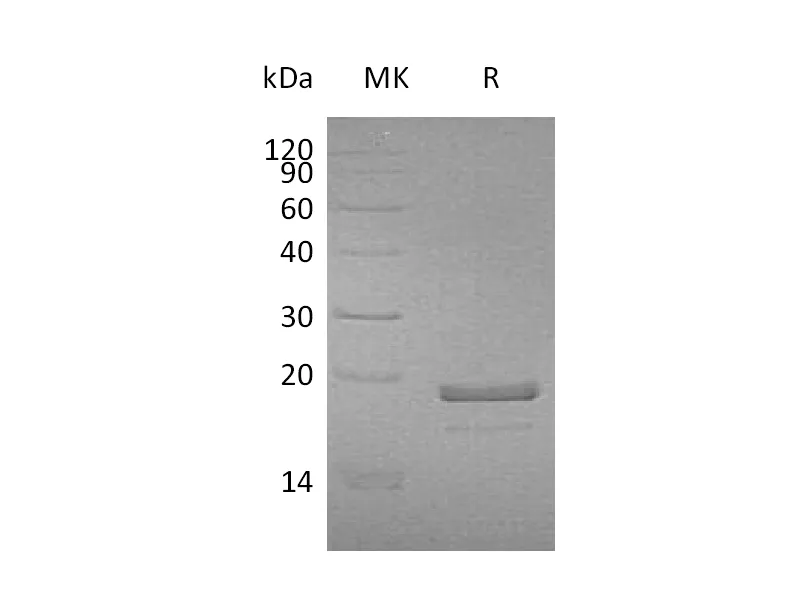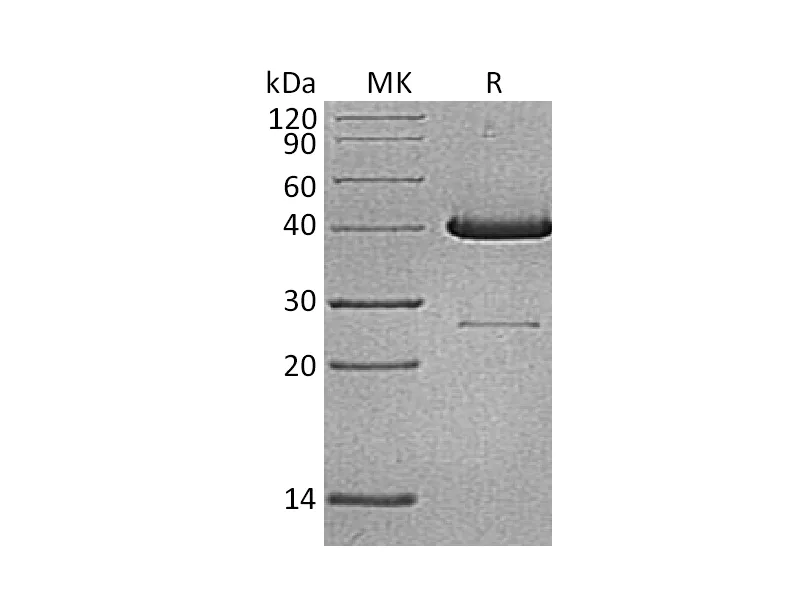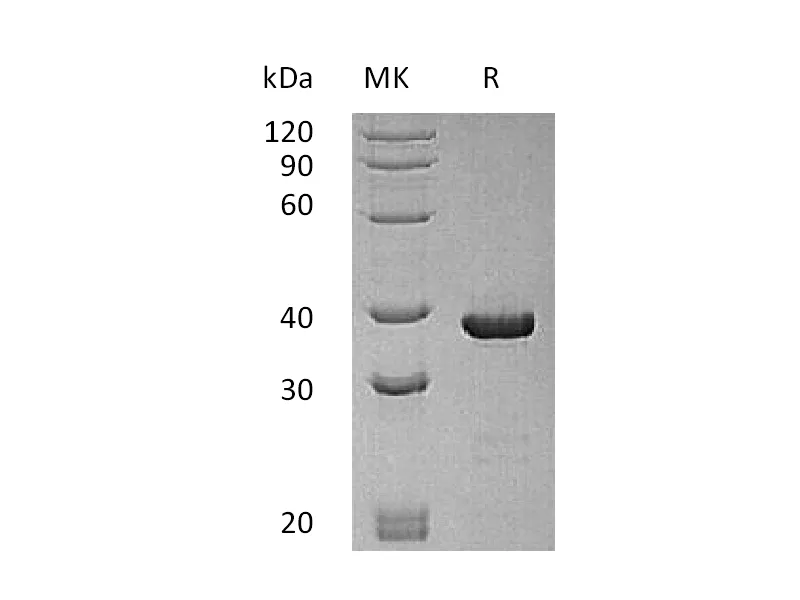| 产品名称 |
Recombinant Mouse PD-L2 (C-Fc) |
| 英文名称 |
PD-L2/B7-DC/CD273/Programmed cell death ligand 2 |
| 纯度 |
Greater than 95% as determined by reducing SDS-PAGE |
| 内毒素 |
<1 EU/µg as determined by LAL test. |
| 蛋白构建 |
Recombinant Mouse Programmed Cell Death 1 Ligand 2 is produced by our Mammalian expression system and the target gene encoding Leu20-Arg219 is expressed with a human IgG1 Fc tag at the C-terminus. |
| Accession |
Q9WUL5 |
| 表达宿主 |
Human Cells |
| 种属 |
Mouse |
| 预测分子量 |
49.7 KDa |
| 制剂 |
Lyophilized from a 0.2 μm filtered solution of 20mM PB, 150mM NaCl, pH 7.4. |
| 运输方式 |
The product is shipped at ambient temperature.Upon receipt, store it immediately at the temperature listed below. |
| 稳定性&储存 |
Store at ≤-70°C, stable for 6 months after receipt.Store at ≤-70°C, stable for 3 months under sterile conditions after opening. Please minimize freeze-thaw cycles. |
| 复溶 |
Always centrifuge tubes before opening.Do not mix by vortex or pipetting.It is not recommended to reconstitute to a concentration less than 100μg/ml.Dissolve the lyophilized protein in distilled water.Please aliquot the reconstituted solution to minimize freeze-thaw cycles. |
| 分子别名 |
| Programmed cell death 1 ligand 2;Pdcd1lg2;PD-1 ligand 2;PD-L2; PDCD1 ligand 2; B7-DC; CD273; |
| 背景介绍 |
| Programmed cell death 1 ligand 2 (PD-L2), also known as butyrophilin B7-DC or PDCD1 ligand 2, belongs to the member of B7 family which can regulate the activation and tolerance of T cells. PD-L2 is one ligand for Programmed cell death 1(PD-1), and the other is PD-L1. These two ligands shares 34% aa sequence identity. Mouse PD-L2 gene encodes a 273 amino acids (aa) protein with a putative 19 aa signal peptide, a 201 aa extracellular region , a 21 aa transmembrane domain and a 32 aa cytoplasmic region. The mouse PD-L2 gene is highly expressed in heart, placenta, pancreas, lung and liver while expressed weakly in spleen, lymph nodes and thymus. Besides, the expression of PD-L2 gene can be induced on dendritic cells grown from peripheral blood mononuclear cells under CSF2 and IL4/interleukin-4 treatment, and up-regulated by IFNG/IFN-gamma stimulation in monocytes. PD-L2 usually functions in a PDCD1-independent manner and is involved in regulating costimulatory signal which is essential for T-cell proliferation and IFNG production. Recent studies demonstrate that the expression of PD-L2 on the tumor cells promotes CD8 T cell–mediated rejection of tumor cells, at both the induction and effector phase of antitumor immunity. Moreover, PD-L2 binds to PD-1 cells and enhances T cell killing in a PD-1–independent mechanism. |
注意事项
本司产品仅用于科研,不用于临床诊断和治疗




